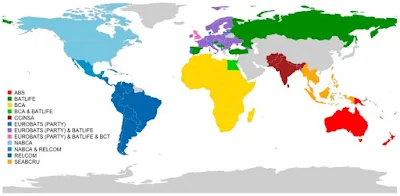Bat Research Networks and Viral Surveillance
Bat research networks and viral surveillance are assumed to be at odds due to seemingly conflicting research priorities. Yet human threats that contribute to declines in bat populations globally also lead to increased transmission and spread of bat-associated viruses, which may pose a threat to global health and food security. In this review, we discuss the importance of and opportunities for multidisciplinary collaborations between bat research networks and infectious disease experts to tackle shared threats that jeopardize bat conservation as well as human and animal health. Moreover, we assess research effort on bats and bat-associated viruses globally, and demonstrate that Western Asia has limited published research and represents a gap for coordinated bat research. The lack of bat research in Western Asia severely limits our capacity to identify and mitigate region-specific threats to bat populations and detect interactions between bats and incidental hosts that promote virus spillover. We detail a regional initiative to establish the first bat research network in Western Asia (i.e., the Western Asia Bat Research Network, WAB-Net), with the aim of integrating ecological research on bats with virus surveillance to find “win-win” solutions that promote bat conservation and safeguard public and animal health across the region.
REFERENCE:
Phelps, Kendra L et al. Bat Research Networks and Viral Surveillance: Gaps and Opportunities in Western Asia. Viruses vol. 11,3 240. 10 Mar. 2019, doi:10.3390/v11030240
-----------------------------------------------------------
Sigue este Blog en Facebook y Twitter
-----------------------------------------------------------
REFERENCE:
Phelps, Kendra L et al. Bat Research Networks and Viral Surveillance: Gaps and Opportunities in Western Asia. Viruses vol. 11,3 240. 10 Mar. 2019, doi:10.3390/v11030240
-----------------------------------------------------------
Sigue este Blog en Facebook y Twitter
-----------------------------------------------------------




Comentarios